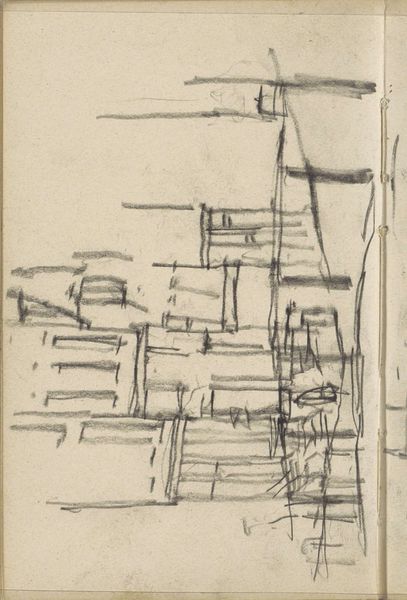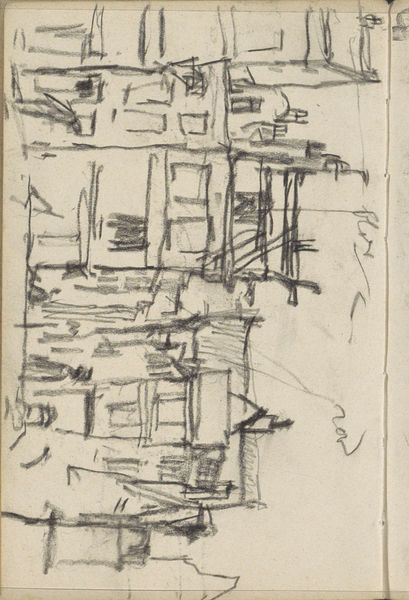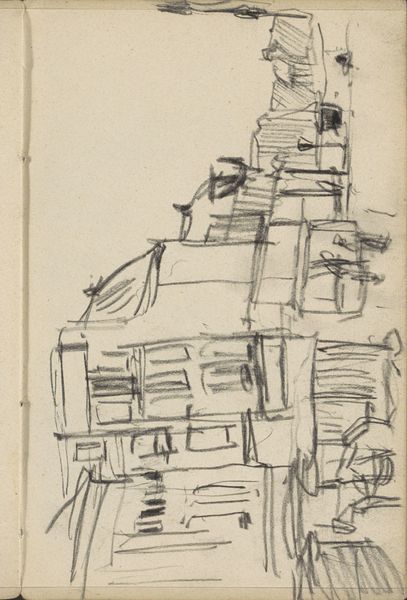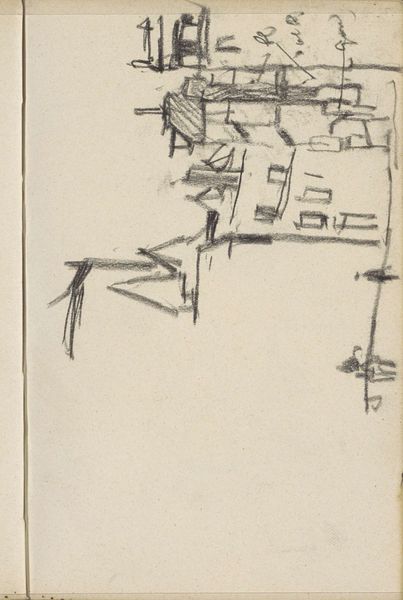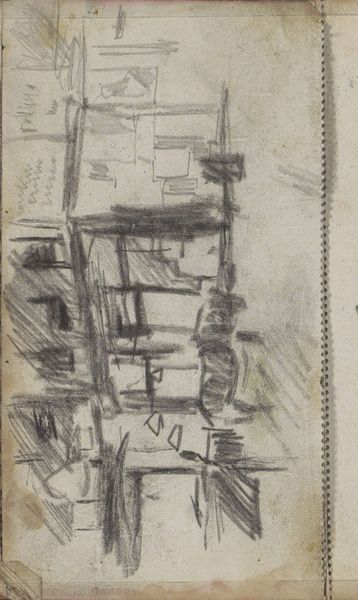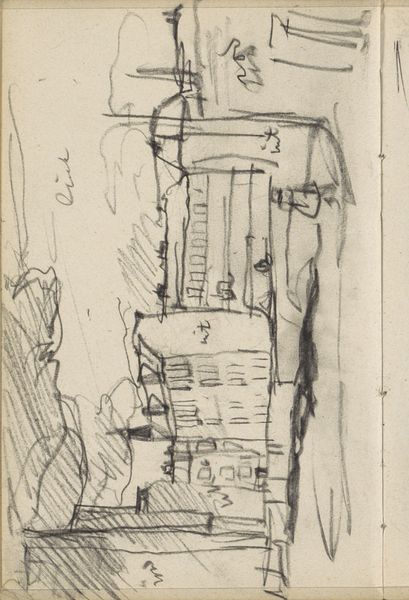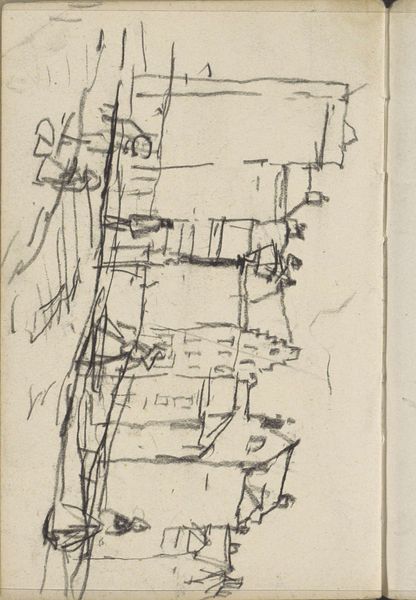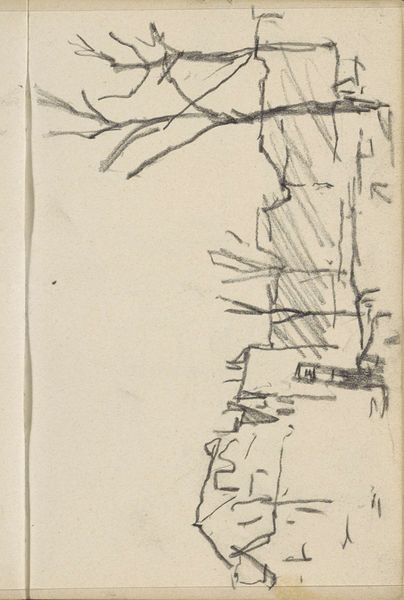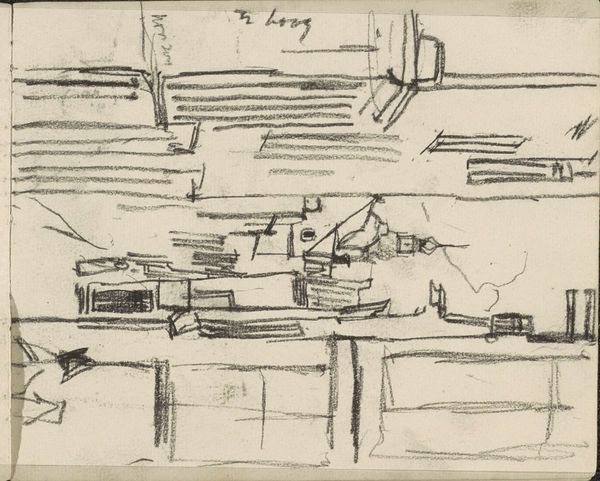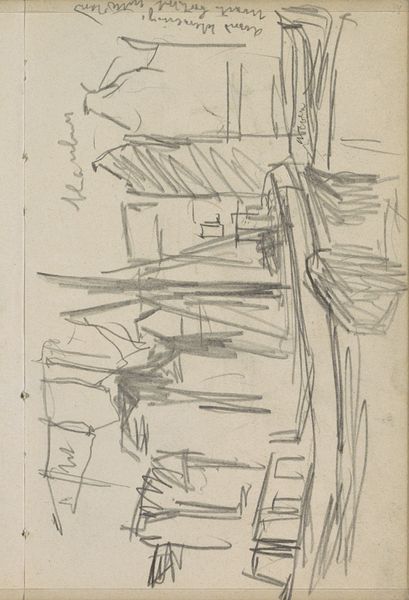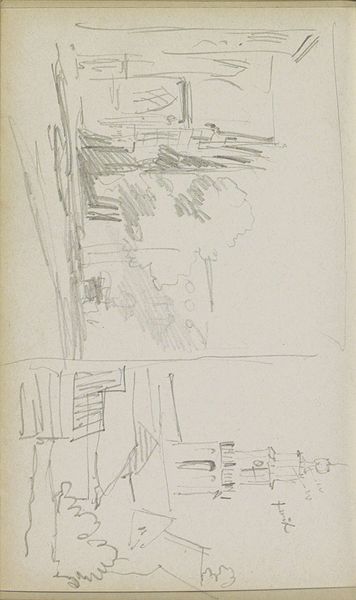
Gezicht in Amsterdam, mogelijk in de buurt van het Leidseplein c. 1900 - 1923
0:00
0:00
georgehendrikbreitner
Rijksmuseum
drawing, pencil
#
drawing
#
pencil
#
cityscape
#
realism
Copyright: Rijks Museum: Open Domain
Curator: This piece just breathes urban life, doesn't it? So raw and immediate. Editor: Indeed, there’s a definite urgency to the strokes. But I find myself responding to the sketch's composition: the looming buildings crowding the space and pressing down almost. Curator: That's George Hendrik Breitner's "Gezicht in Amsterdam, mogelijk in de buurt van het Leidseplein", circa 1900 to 1923. It’s a pencil drawing currently held in the Rijksmuseum. I see it as a glimpse into the societal fabric, really reflecting the anxieties and aspirations of Amsterdam at the turn of the century, particularly its rapid growth. Editor: Ah, the tangible record of urban development. I’m thinking about the pencil itself. Its ready availability speaks volumes about the democratisation of art production at the time. Cheaper, more portable, instantly capturing the shifting cityscapes for even casual observers. Curator: Absolutely. It gives a voice to everyday experience and it reflects a changing identity and the very notion of home. The figure feels like the ultimate observer. Editor: To what extent do you think Breitner intentionally aestheticized these city scenes or simply captured what he saw around him? Did he reflect or resist? Curator: I think his realism—if we want to call it that—is incredibly intentional, a considered response to both the aesthetic traditions that came before and to the urgent needs and social issues of his day. He doesn’t romanticize Amsterdam, but his sketches can highlight these complex relationships. He certainly seems aware of who’s experiencing this growth and change. Editor: Yes, by using an easily accessible medium like pencil and choosing mundane street views he brings into question the traditional hierarchies within art, the subject matter deemed worthy, and, really, who has the right to represent what. Curator: Right, his approach really opens up broader dialogues. Editor: Exactly. Considering materials and historical setting gives me, gives us, an appreciation of how these images reflect the transformation and perception of labour at the time. Thank you for sharing it. Curator: And thank you, it always makes me consider a new perspective.
Comments
No comments
Be the first to comment and join the conversation on the ultimate creative platform.
